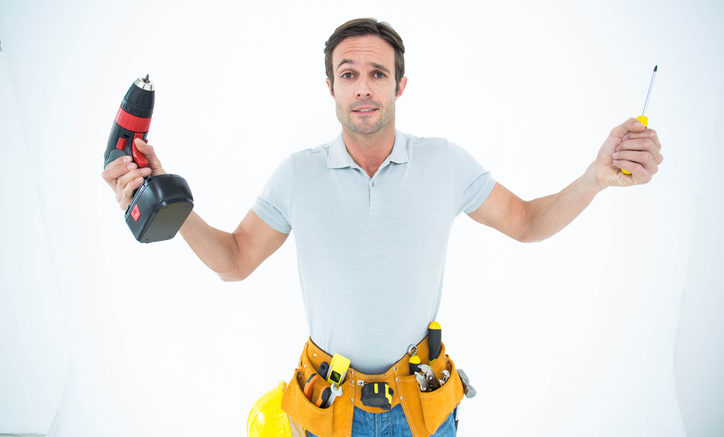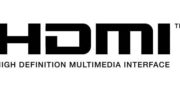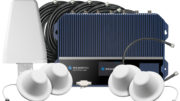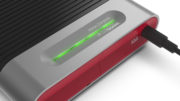A couple of weeks ago, we were contacted by an installer who wanted to get back into satellite television. All over the country, people are flocking back to satellite since streaming costs have gotten so high. A satellite TV plan gives you the ability to add streaming apps, often at no charge, and also gives you hundreds of channels full of the shows you want to watch.
This installer told us he did a lot of DIRECTV and DISH installs in the early 2010s and still had all his old equipment. When he fired up his old Accutrac meter, it didn’t work for him. He didn’t give a lot of details, but a lot of that sort of equipment can fail over time if the batteries and capacitors start to leak. Leaky batteries and capacitors are a major problem for older electronics, and it’s something that’s become an issue with collectors of 20th century gear.
Unfortunately, the Accutrac hasn’t been made in quite some time. It was manufactured by Emitor, a company that seems to still be in business but hasn’t changed its website in about 10 years. After a few minutes of searching, the customer realized that the older Accutrac meters you find on eBay don’t work with the latest DISH and DIRECTV technologies. He contacted Solid Signal to search for a replacement.
Why don’t old meters work with new DIRECTV and DISH technology?
In order to properly install a satellite dish, a meter needs to do more than just read signal strength. There are several other measurements of signal quality as well. I won’t go into too much detail, but this excellent article lays out a lot of it. The point is that in order to be able to work, the meter needs to decode the signal instead of just reading it. This means being able to interpret the signal and get those critical measurements out of it. That’s just one step away from making these meters into full-fledged satellite receivers.
That’s just one part of it. In the last decade, DIRECTV has moved to digital SWM technology, which allows for up to 22 different programs to be carried on a single wire. DISH has had two major changes as well. They revamped the technology used on their Eastern Arc satellites, making all older meters obsolete. Then, they moved to a “hybrid” dish model which is designed to supply the Hopper 3 DVR specifically. Without getting too technical, all these changes mean that older meters will not work. What’s more, DIRECTV and DISH will not release the specs needed for other manufacturers to create their own meters. Installers must use the official, licensed meters if they want to aim a dish without an activated receiver present.
What are the options now?
The options for today are more expensive than in previous years. In the 2000s, when satellite TV demand was skyrocketing, both DIRECTV and DISH were happy to encourage independent installers to put in satellite systems. Unfortunately, that strategy backfired a bit. Some installers didn’t do very good installs. Some companies were a little shady. By the 2010s, both companies had changed their tunes. They still encouraged independent installers, but the real focus was on their own in-house installation pros. New equipment was designed with in-house installers in mind. That meant better quality meters, but it also meant they would be more expensive.
With that in mind, here are the options for DIRECTV and DISH.
DIRECTV AIM Meter
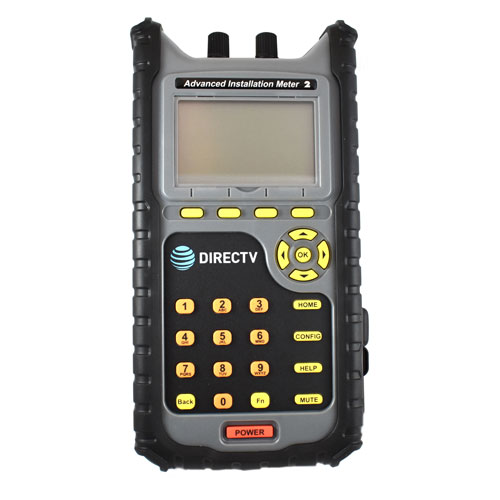
This is DIRECTV’s Advanced Installation Meter. Not only can it work with all DIRECTV technology from oldest to newest, it has a guided mode which will turn any installer into a wizard. You can generate site reports easily, and it’s light with all-day battery life.
Applied Instruments XR3 with Turbo S2 module
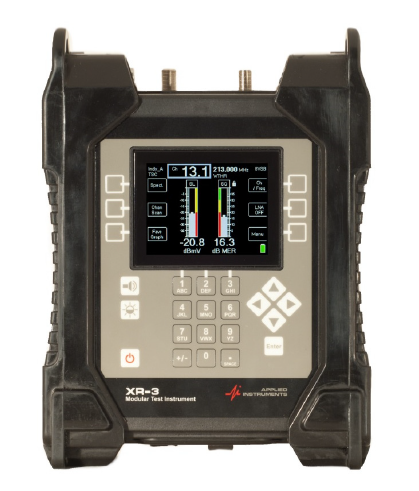
The name may be a lot, but this Applied Instruments XR3 with Turbo S2 meter is the best (and really only) choice for working with DISH satellite equipment. Those familiar with it just call it the AI Turbo S2. With a large color screen and easy navigation, it’s designed o make DISH installations easy and quick. The instrument base can also be used with other modules that can help aim satellite internet and monitor cable TV installs. It’s perfect for the installer who works with many services.
Yes, you need both. Yes, I know they aren’t cheap
You’ll end up spending in the low four figures to bring both meters home. I understand that’s quite an investment. I could go on and on about how quality tools are worth it. It’s easy to tell you that the meters pay for themselves after just a few installs. All that is true. But here’s the simple fact: you just have to have them. If you want to install both DIRECTV and DISH, you’ll need both. There aren’t any other choices for professional quality. It’s these two, or…
…yes there are “compromise” options in many cases. Some installers carry older DIRECTV and DISH equipment with them that’s compatible with the older meters. Then, when the aiming is done, they replace the older LNBs with new ones, hoping the dish hasn’t moved. If you have activated receivers, you can use those as well to aim DIRECTV and DISH equipment. It’s technically against your own customer agreement to bring them with you to an install. But, it can be done.
I guess it comes down to whether or not you want to be in that top-tier of installers, so you can command top-tier prices. If that’s where you want to be, you need these meters. Simple as that.
Need more than a meter? Call us for help
We work with thousands of installers and integrators all over the country. We supply independent folks with the same parts and accessories that the big companies use. Plus, we have all the installer tools you’ll need. Let us put together a quote that includes everything you need to get up to date.
Call us at 888-233-7563 during East Coast business hours. We’ll make sure you get great customer service, just like what you give to your own customers. If it’s after hours, fill out the form below and we’ll get right back to you.

